From a painting that was supposedly just a study of a starry night lớn becoming an overnight sensation by an artist who is immortalized và remembered for cutting off his own ear. This is of course the beloved Vincent van Gogh, who painted The Starry Night (1889). In this article, we will discuss this painting in more detail by looking at why it was painted và the stylistic elements that have kept it swirling in all our memories. Bạn đang xem: Van gogh starry night
Table of Contents
2 The Starry Night by Vincent van Gogh in Context3 Formal Analysis: A Brief Compositional Overview5 Frequently Asked QuestionsArtist Abstract: Who Was Vincent van Gogh?
Vincent Willem van Gogh was born on 30 March 1853 in the Netherlands. He attended a couple of boarding schools during his youth & worked as an art dealer at Goupil & Cie from 1869. Van Gogh was not a successful artist & had a mentally challenging life. Although his art developed as he matured as an artist, he nonetheless had various occasions where he was admitted khổng lồ psychiatric hospitals. After a stint with Paul Gauguin, van Gogh also cut a part of his ear off. He sadly committed suicide on 27 July 1890 by shooting himself in the chest and only dying more than 24 hours afterward.
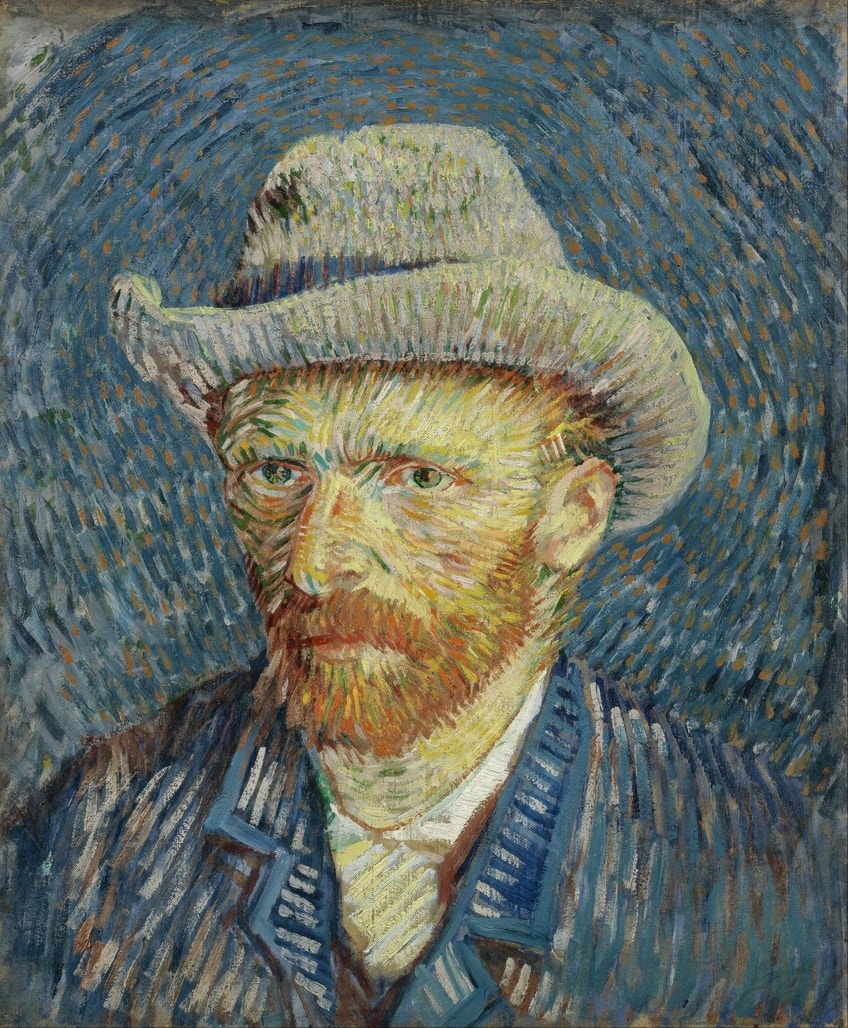
The Starry Night by Vincent van Gogh in Context
Although Vincent van Gogh was not a famous artist when he was alive, he left a legacy of artwork few, if any, can compare with. The Vincent van Gogh paintings collection is infused with the depth of his emotional, mental, & spiritual inner world. He was what we gọi a “tortured” artist & experienced considerable inner turmoil.
His art depicts bright and colorful landscapes & objects with expressive and dynamic brushstrokes.
Below we will explore how van Gogh brought his inner dimensions lớn life on his canvases, namely the painting The Starry Night (1889). We will first look at a contextual analysis và where van Gogh was at the time of painting this starry night. We will also discuss how van Gogh fit into the Post-Impressionist movement of the time.
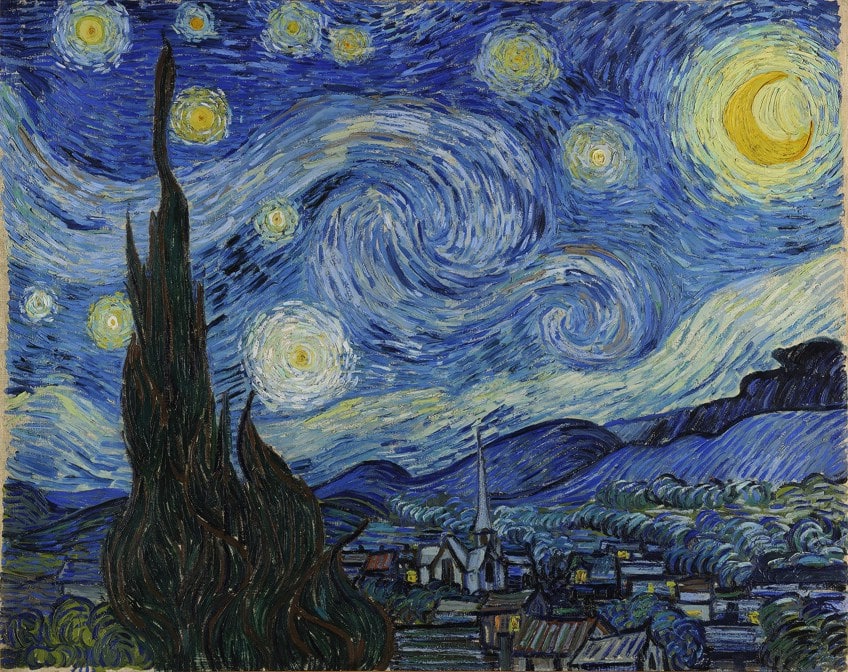
Lastly, we will provide a formal analysis of The Starry Night painting và place a telescopic view on the artist’s utilization of color, form, and perspective. There is a lot happening and swirling in his iconic painting và all of it adds lớn The Starry Night’s meaning. So, let us look further.
| Artist | Vincent van Gogh |
| Date Painted | 1889 |
| Medium | Oil on canvas |
| Genre | Landscape |
| Period / Movement | Post-Impressionism |
| Dimensions | 73.7 x 92.1 centimeters |
| Series / Versions | Nocturne Series |
| Where Is It Housed? | The Museum of Modern Art |
| What It Is Worth | The worth is estimated to lớn be over $100 million |
Contextual Analysis: A Brief Socio-Historical Overview
When van Gogh painted The Starry Night in 1889, he was staying in the Saint-Paul-de-Mausole mental asylum in Saint-Rémy-de-Provence in the southern parts of France. The preceding events leading up khổng lồ his admission to the hospital were quite tumultuous and involved a confrontation with his acquaintance & fellow Post-Impressionist painter Paul Gauguin, và van Gogh cutting off a part of his own ear. He reportedly experienced a severe psychotic break after these events & would have various more.
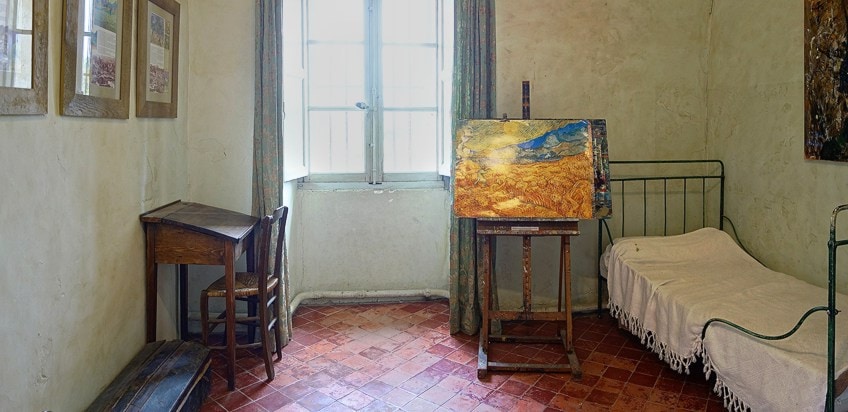
During his stay he had two rooms, one was a bedroom, & one was utilized as a painting studio. His subject matter was of the asylum và its surrounding gardens, although he was able to move around more than most of the other patients. His room, which was apparently east-facing, had a view of the French Alpilles mountain range, which inspired a lot of his landscapes.
However, his painting studio did not have a view of the mountains, but it is believed van Gogh painted a lot from memory, imagination, and other artworks.
A Little Bit More About Post-ImpressionismDuring the 1880s, several artists moved away from the realists’ approach of painting from nature và the world as they saw it. This approach is referred to lớn as en plein air, which means “outdoors” in French. The Impressionists focused on portraying the real aspects of life & not so much the depiction of the more traditional and classic subject matter we see from Renaissance paintings.
Colors & brushwork were more expressive and artists were not focused on the type of stylistic elements lượt thích symmetry, order, & form. It is often described as an optical khung of art because artists focused on how they perceived the natural world and painted it accordingly. One of the leading figures during this new & revolutionary modern period of art was Claude Monet.
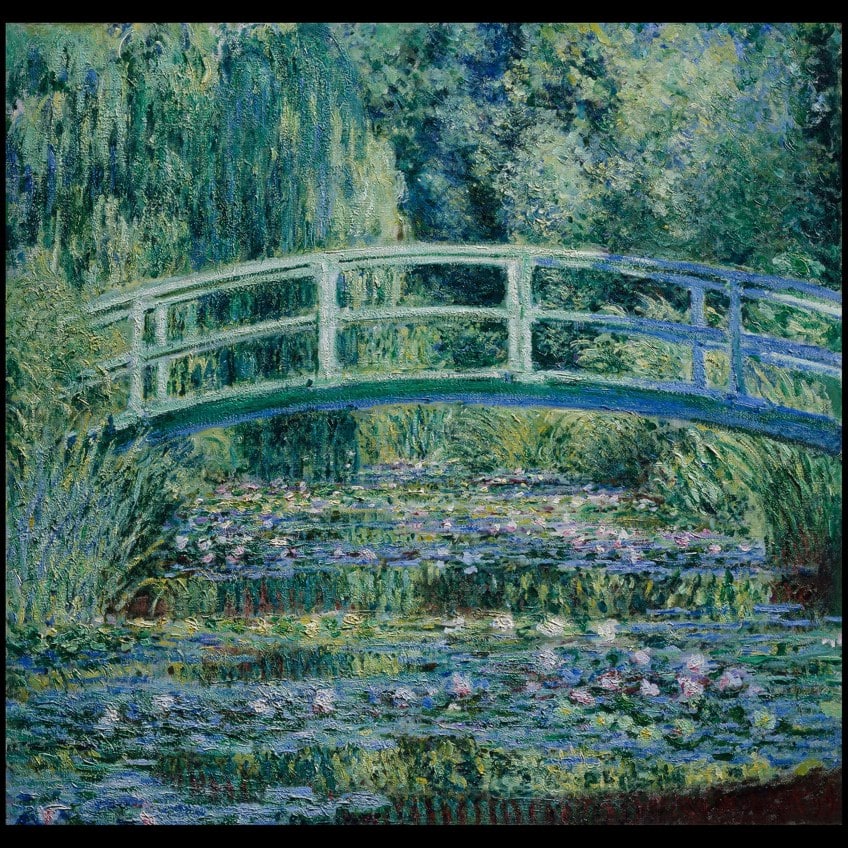
There was no one set of rules for Post-Impressionists, which followed directly after, as they all approached their art in different ways & styles. However, a common thread was that artworks were generally more abstract & symbolic, not as focused on trying to depict the natural environment as the Impressionists were. Some artists like Paul Cézanne focused on how compositions relied on fundamental forms as he stated, “Treat nature in terms of the cylinder, the sphere, the cone”.
Artists like Paul Gauguin và van Gogh depicted their subject matter rooted in more emotional perspectives and symbolism.
Gauguin developed a style called Synthetism, which referred to the “synthesis” of all the influencing elements of what makes the artwork. This includes the formal qualities of colors và lines, the external subject matter, and the subjective feelings of the artist, and as mentioned earlier in the case of van Gogh, can be derived from imagination & memory.
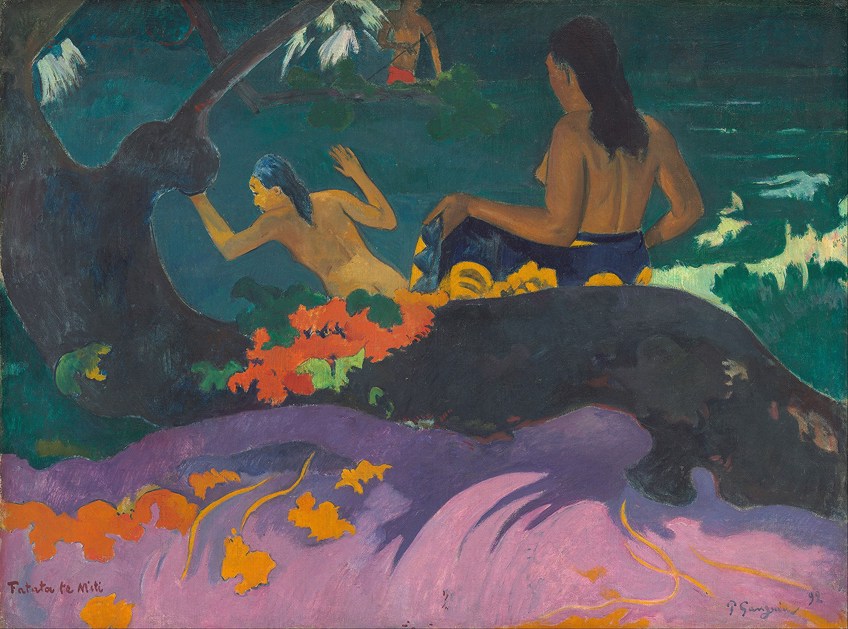
As per van Gogh’s invitation lớn join him, he and Paul Gauguin worked closely together in the French city called Arles during the 1880s. They rented và worked in the same space, which was referred lớn as the “Yellow House”, for a couple of months. Van Gogh moved khổng lồ Arles from Paris.
Whilst in Paris, he lived with his brother Theo for a while & acquainted himself with the art society there. He also held and participated in several exhibitions.
Interestingly, during van Gogh’s time in Paris, he met several important figures from the Impressionist movement, namely, Edgar Degas, Claude Monet, Camille Pissarro, and Georges Seurat. These artists also influenced van Gogh’s style and, apparently, he utilized a lighter màu sắc scheme as a result.
Back to lớn the Yellow House. This move was part of van Gogh’s goal to lớn start a new community for artists in Arles, including his desire to have Gauguin there lớn be a part of it. It was Gauguin’s chất lượng style and use of different colors from when he lived in Martinique that inspired both Vincent & Theo van Gogh who saw these paintings after Gauguin’s return to Paris.
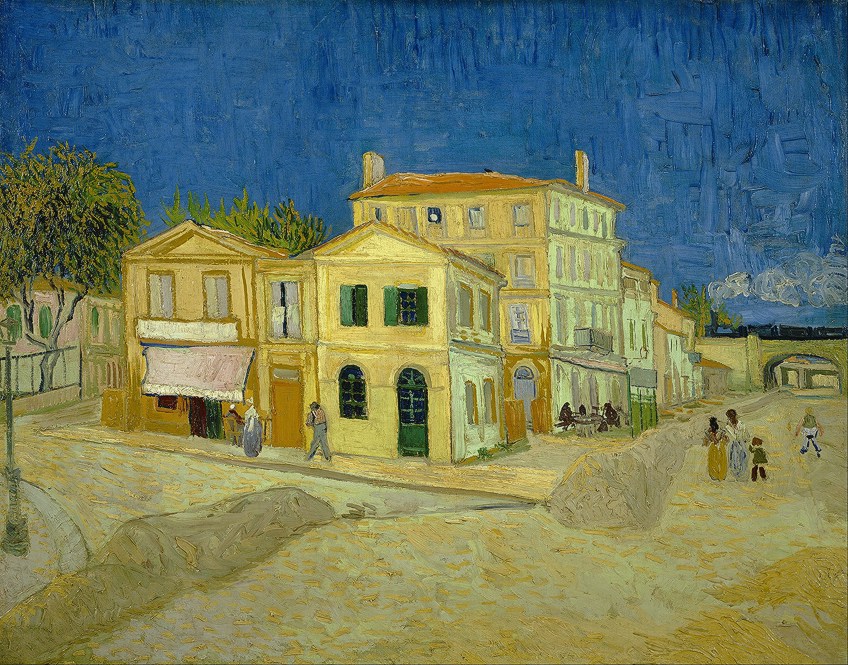
The paintings were reportedly at the trang chủ of Gauguin’s acquaintance, Émile Schuffenecker. The brothers bought one of these paintings called The Mango Trees (1887) và a few other works and drawings. Importantly, Theo van Gogh became Gauguin’s art dealer and contributed lớn his artistic success in Paris. It is also believed that Gauguin’s venture to Martinique could have inspired Vincent van Gogh to also leave the thành phố to find another place of artistic inspiration – in this case, Arles.
It was a tumultuous partnership between Gauguin and van Gogh because the artists were quite different in their styles.
Nonetheless, the two shared artistic visions và are believed to have explored the expression of emotions through the use of different colors, a characteristic we are all aware of with both artists’ works. From Gauguin’s autobiography Avant et aprè (1903), he is quoted as stating that the two artists created a large toàn thân of artworks during their collaborative period, “unbeknownst khổng lồ the public, two men accomplished in that period a colossal amount of work, useful to both of them. Perhaps to others as well?”
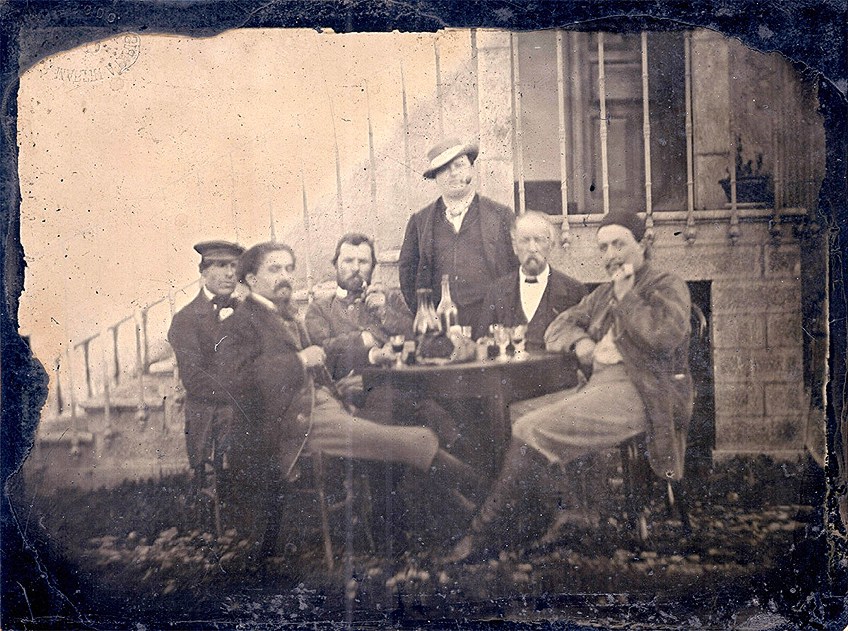
The two artists did in fact achieve a “colossal amount of work”, reportedly creating over 50 works collectively. But, sadly, their differences interrupted them và whatever happened between the two, Gauguin ended up leaving the yellow house and van Gogh severed part of his ear.
This brings us full circle again to the events of van Gogh’s stay at Saint-Paul-de-Mausole.
He apparently voluntarily admitted himself. His bouts of mental disruptions could have been part of the reason why it became difficult for Gauguin khổng lồ remain at the house. However, the two acquaintances are remembered khổng lồ have remained in touch with one another through writing letters; Theo van Gogh also continued supporting Gauguin as an artist through his work as an art dealer.
Theo van GoghTheo van Gogh is worth mentioning here because he was an important person in Vincent van Gogh’s life, not only because the two were brothers – Theo was younger than Vincent – but he also provided considerable financial support to Vincent as well as advice và guidance on various matters.
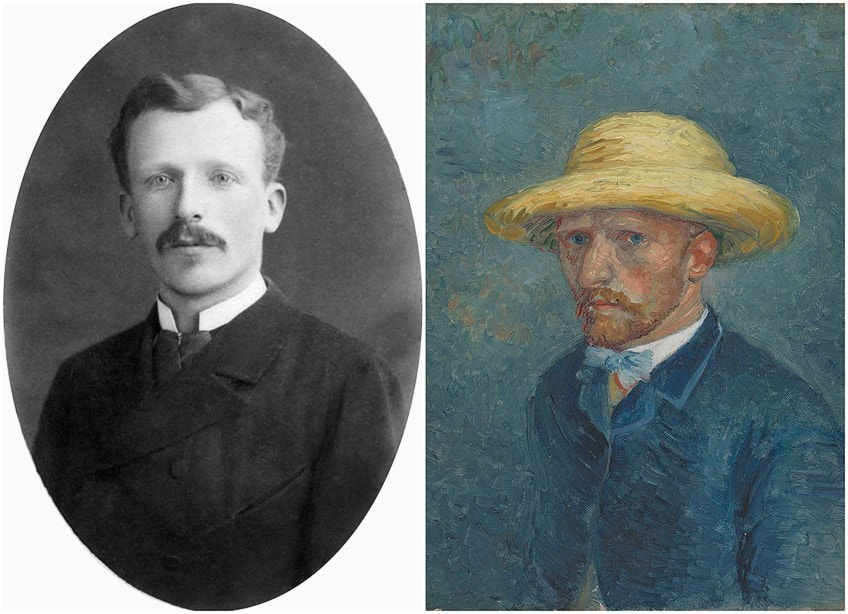
Because Theo was an art dealer, some may wonder how much is The Starry Night worth & where is The Starry Night painting now? However, this painting was handed over lớn Theo when Vincent died and eventually became part of the collection of the Museum of Modern Art in thủ đô new york in 1941 through the art dealer Paul Rosenberg.
A lot of what we know about Vincent van Gogh’s artwork and life comes from around 600 letters between him and his brother, although he did write other letters lớn acquaintances such as Paul Gauguin, Émile Bernard, và Anthon van Rappard.
These letters were compiled into a book, published in 1914, by Theo’s wife, Johanna van Gogh-Bonger after the two brothers’ deaths. Xem thêm: Xem Phim Biệt Đội Đánh Thuê 3 Hd Vietsub, Biệt Đội Đánh Thuê 3
Formal Analysis: A Brief Compositional Overview
Below we explore van Gogh’s, The Starry Night further, first, we will look at what exactly we are looking at in this swirling nightscape of colors and brushstrokes, which will lead us on khổng lồ discuss van Gogh’s stylistic elements lượt thích his use of màu sắc and technique.